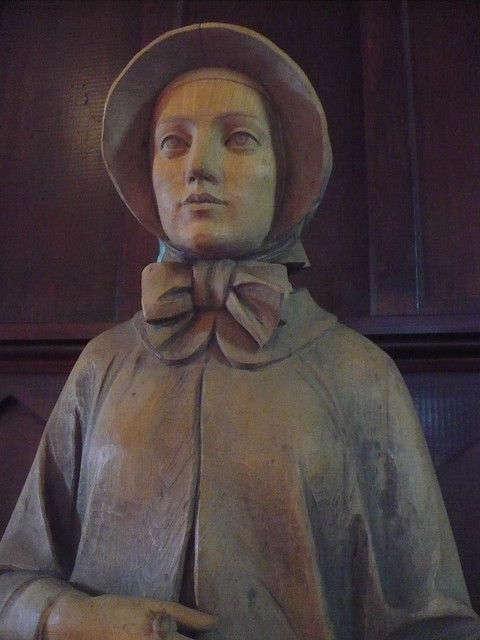
A. currell via flickr licensed cc 2.0
I always liked Elizabeth Seton because I could relate to her as a married woman and as a mother trying to educate her children. Catholics schools have adopted her as a patroness, but I think we homeschooling moms can be inspired by her loving care and concern for her family as well.
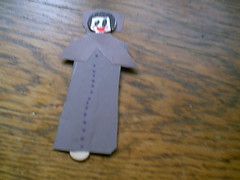
From the Sisters of Charity Site.
Elizabeth Ann Bayley Seton began the Sisters of Charity, the first religious community of women founded in the United States. She was born into a prominent Episcopalian family in New York City, August 28, 1774. Her father, Dr. Richard Bayley, was a physician, professor of medicine, and one of the first health officers of New York City. Her mother, Catherine Charlton Bayley, daughter of a Protestant Episcopal minister, died when Elizabeth was only three years old.
Elizabeth married William Magee Seton, scion of a wealthy New York mercantile family with international connections, January 25, 1794, at the home of her sister, Mary Bayley Post. Five children were born between 1795 and 1802, Anna Maria, William, Richard, Catherine, and Rebecca. As a young society matron, Elizabeth enjoyed a full life of loving service to her family, care for the indigent poor, and religious development in her Episcopal faith, nurtured by the preaching and guidance of Rev. John Henry Hobart, an assistant at Trinity Church.
As the eighteenth century drew to a close, a double tragedy visited Elizabeth. Political and economic turmoil took a severe toll on William Seton’s business and on his health. He became increasingly debilitated by the family affliction, tuberculosis. Hoping to arrest the disease, Elizabeth, William, and Anna Maria embarked on a voyage to Italy. On their arrival in Leghorn, they were placed in quarantine; soon after, December 27, 1803, William died. Waiting to return to their family, Elizabeth and Anna Maria spent several months with the Filicchi brothers of Leghorn (Livorno), business associates of her husband.
For the first time Elizabeth experienced Roman Catholic piety in her social equals. She was deeply impressed, especially by the doctrine of the real presence of Christ in the Eucharist. She returned to New York in June 1804, full of religious turmoil. After almost a year of searching, she made her profession of faith as a Roman Catholic in March 1805, a choice which triggered three years of financial struggle and social discrimination. At the invitation of several priests, she moved with her family to Baltimore in June 1808 to open a school for girls.
Catholic women from around the country came to join her work. Gradually, the dream of a religious congregation became a reality. The women soon moved to Emmitsburg, Maryland, where they formally began their religious life as Sisters of Charity of St. Joseph’s July 31, 1809. Elizabeth Seton was named first superior and served in that capacity for the next twelve years.
As the community took shape, Elizabeth directed its vision. A Rule was adapted from that of the French Daughters of Charity, a novitiate was conducted, and the first group, including Elizabeth, made religious vows July 19, 1813. In 1814 the community accepted its first mission outside Emmitsburg, an orphanage in Philadelphia. By 1817 sisters had been sent to staff a similar work in New York.
During her years in Emmitsburg, Elizabeth suffered the loss of two of her daughters to tuberculosis, Anna Maria in 1812 and Rebecca in 1816. By that time she herself was weak from the effects of the disease. She spent the last years of her life directing St. Joseph’s Academy and her growing community. She died January 4, 1821, not yet forty-seven years old.
Elizabeth Seton was canonized September 14, 1975, by Pope Paul VI as the first native-born saint of the United States.
Find a Grave Memorial for St. Elizabeth Seton is here.
Today is also the 11th day of Christmas!
Eleven Pipers Piping
The Eleven pipers piping refers to the eleven Apostles who were faithful to Jesus.
1) Peter, symbol the keys of heaven, Feast June 29
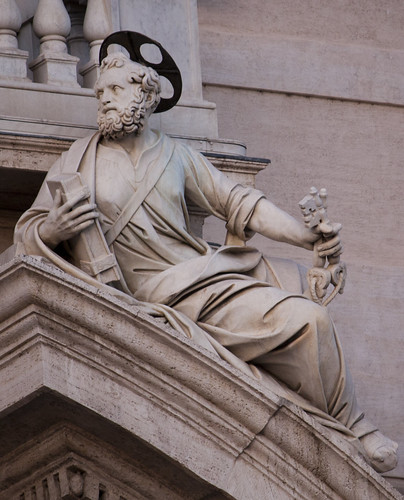
St. Peter via Father Lawrence OP on Flickr licensed under cc 2.0
2) Andrew symbol – St. Andrew’s Cross, Feast November 30
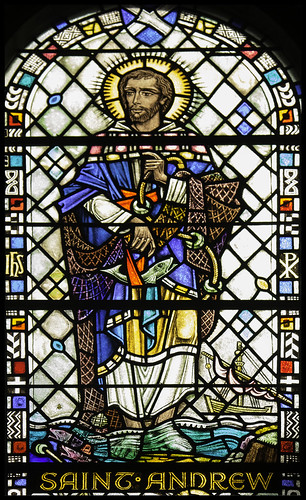
St. Andrew via Father Lawrence on Flickr licensed cc 2.0
3) James the Greater – symbol scallop shell and sword of martyrdom Feast July 25
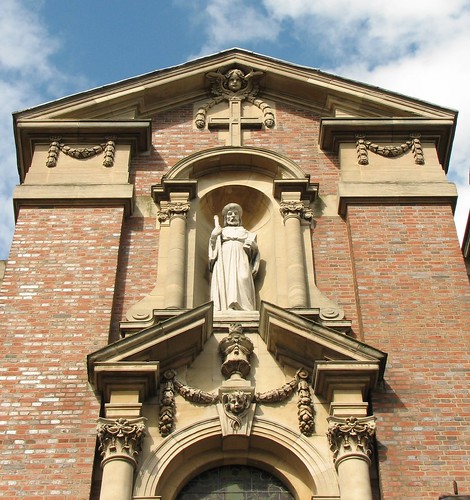
Father Lawrence Lew, OP via Flickr, licensed cc
4) John, symbol a poison chalice (from which he survived!) Feast December 27
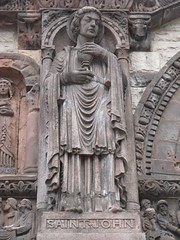
St. John by Matt via Flickr licensed under cc 2.0
5) Thomas, symbol a spear. Feast July 3

St. Thomas via Father Lawrence OP on flicker licensed under cc 2.0
6) Matthew, symbol three purses, September 21
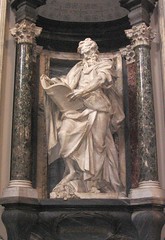
St. Matthew via jnshaumerer on Flickr licensed under cc 2.0
7) Phillip, symbols two loaves of bread for John 6:7, feast May 1

St. Philip via Father Lawrence on Flickr licensed cc 2.0
8) Bartholomew aka Nathaniel knives as he was flayed and beheaded Feast August 24
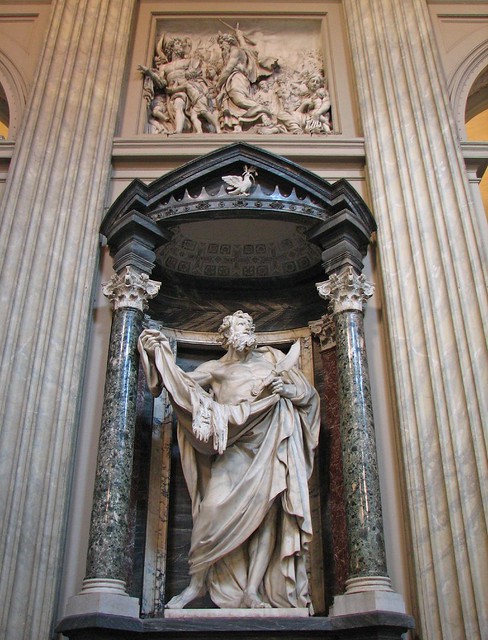
Father Lawrence Lew OP on Flickr licensed CC
9. James the lesser, symbol a saw as he was martyred with a saw Feast May 1
10. Jude Thaddus, symbol a boat of a walking stick to symbolize his travels, Feast October 28
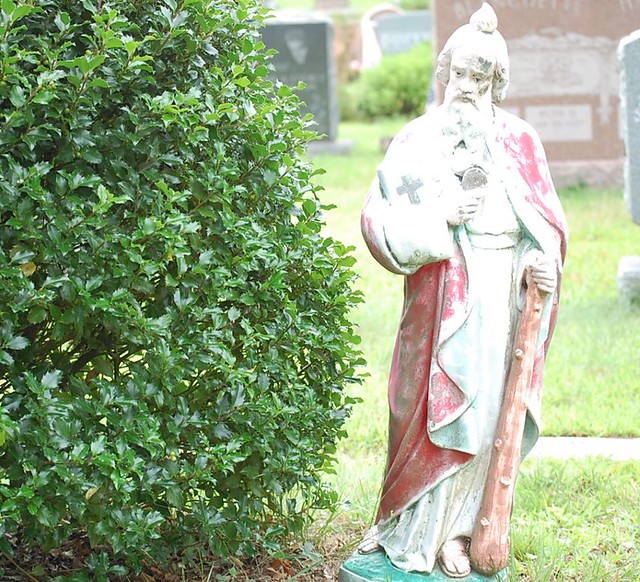
John via Flickr licensed creative commons
11. Simon, symbol a fish or fishing lines for fisher of men, Feast October 28
St. Simon by Brett Davis via Flickr licensed under cc 2.0
Here is a nice little poem to help you remember the names of the apostles:
Peter, Adrew, James and John
Fishermen of Caperneum
Thomas and St. Matthew too,
Phillip and Bartholomew
James and his brother Thadeus
Simon and the one called Judas,
Twelve disciples here in all
following the Master’s call.
Since I first made this bowl for the feast of Pentecost, I have been finding a lot of other uses for it. I bring it out for each apostle’s feast day, so it seems only fitting that it should come out for this 11th day of Christmas filled with red and green M&Ms for Christmas, or maybe just one simple votive candle – the possibilities are endless!
@import url(//www.google.com/cse/api/branding.css);

